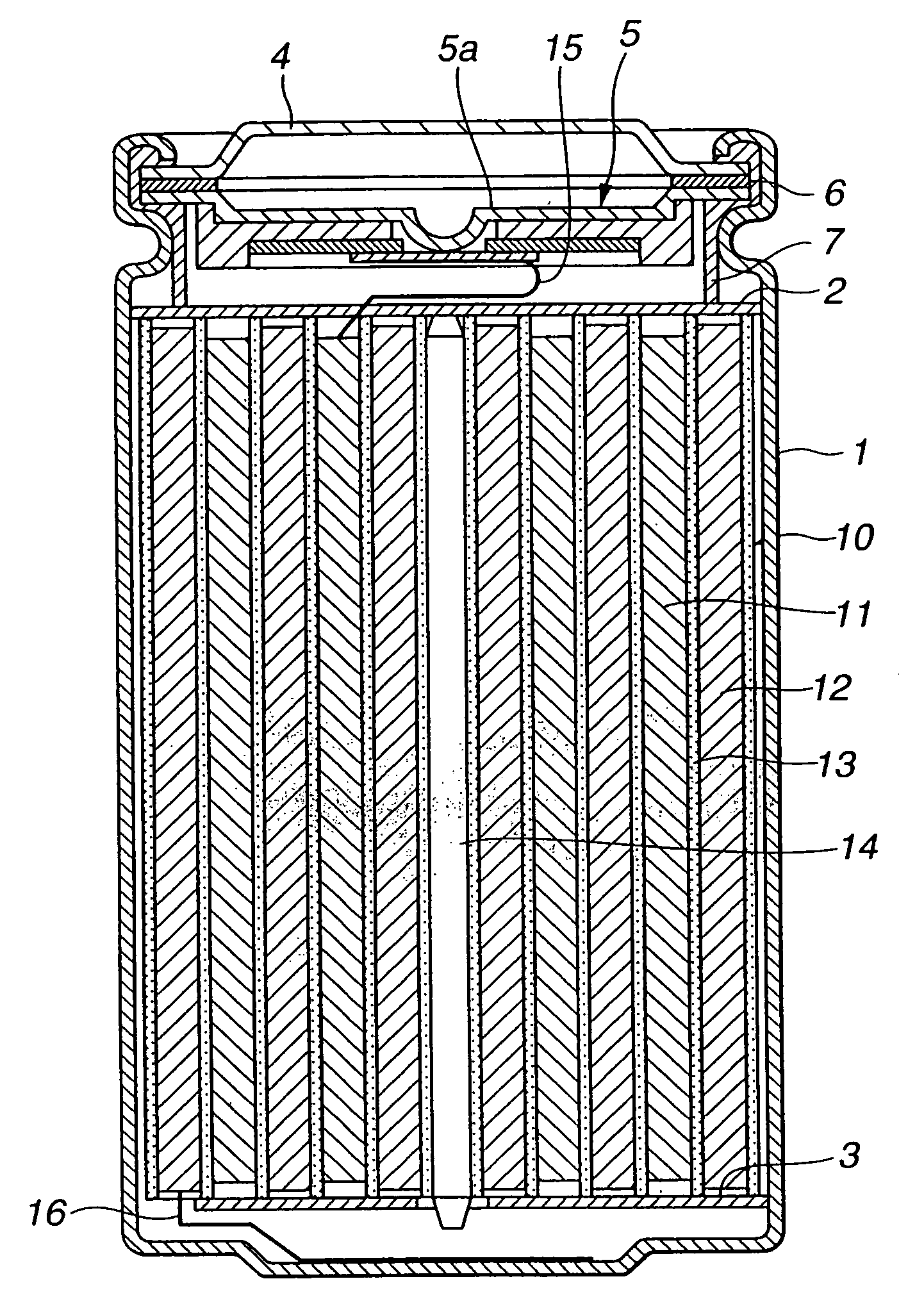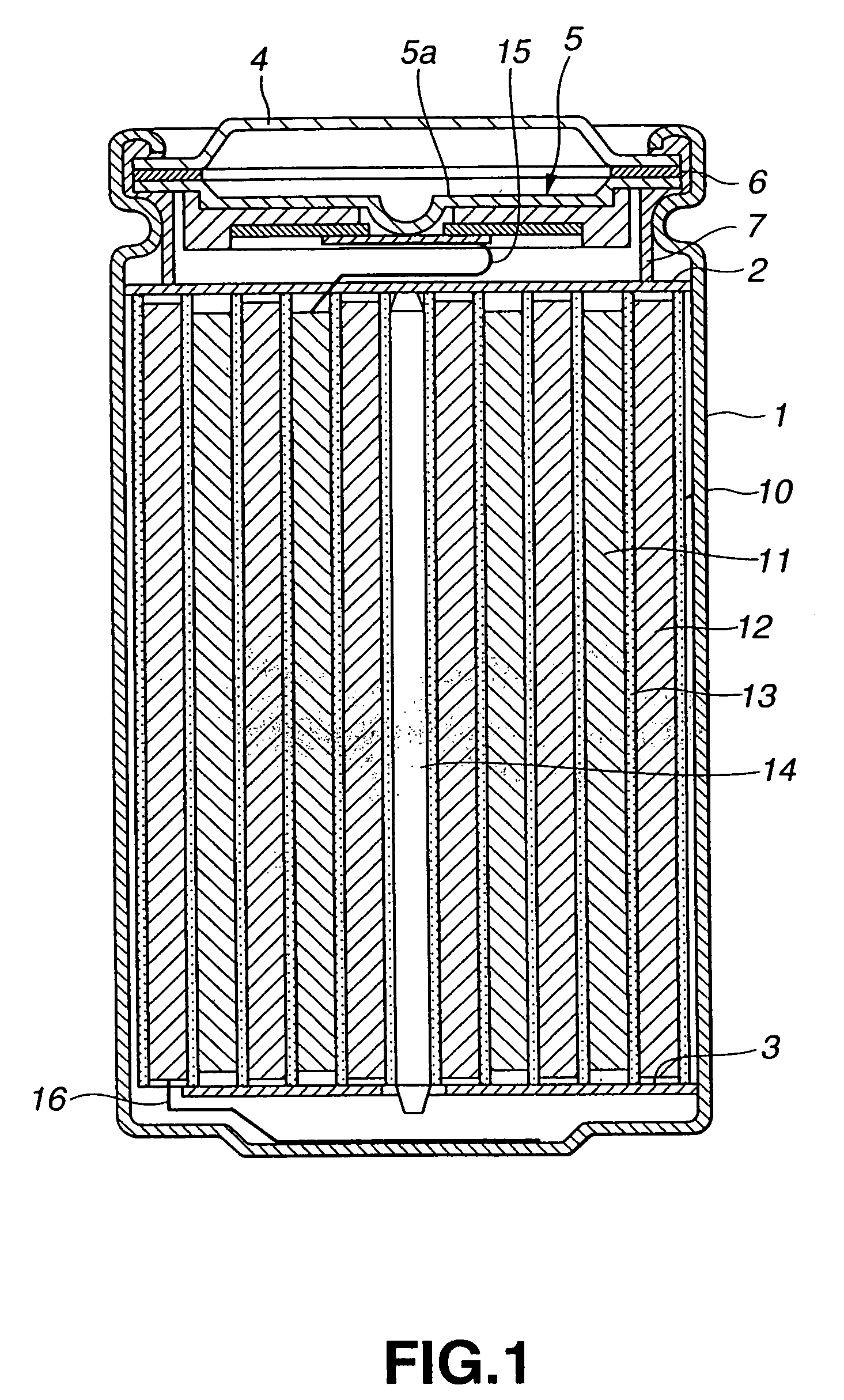Non-aqueous electrolyte secondary cell
a secondary cell, non-aqueous electrolyte technology, applied in secondary cell servicing/maintenance, cell components, cell component details, etc., can solve the problem of not giving enough, certain time lag until the separator pores are completely blocked, and the approach cannot be said to give enough, etc. problem, to achieve the effect of improving the low temperature characteristics, not stopping up in a short time, and superior shutdown effects
- Summary
- Abstract
- Description
- Claims
- Application Information
AI Technical Summary
Benefits of technology
Problems solved by technology
Method used
Image
Examples
experiment 3
[0270] The desirable thickness of the cathode side micro-porous film, with respect to the total separator thickness, was then scrutinized.
Sample 42
[0271] A non-aqueous electrolyte secondary cell was prepared in the same way as in sample 30, except using, as a first layer micro-porous film, a film of micro-porous polyethylene, with melting points of 125° and 135° C., a thickness of 4 μm and a porosity of 36%, and also using, as a second layer micro-porous film, a film of micro-porous polyethylene, with the melting point of 135° C., a thickness of 30 μm and a porosity of 36%. Meanwhile, the thickness of the cathode side micro-porous film with respect to the total separator thickness was 11.8%.
Sample 43
[0272] A non-aqueous electrolyte secondary cell was prepared in the same way as in sample 30, except using, as a first layer micro-porous film, a film of micro-porous polyethylene, with melting points of 125° and 135° C., a thickness of 7 μm and a porosity of 36%, and also using, a...
experiment 4
[0283] The desirable range of the melting point of the side cathode micro-porous film forming the separator was then scrutinized.
Sample 50
[0284] A non-aqueous electrolyte secondary cell was prepared in the same way as in sample 30, except using, as a first layer micro-porous film, a film of micro-porous polyethylene, with melting points of 125° and 135° C., a thickness of 7 μm and a porosity of 36%, and also using, as a second layer micro-porous film, a film of micro-porous polyethylene, with the melting point of 135° C., a thickness of 27 μm and a porosity of 36%.
Sample 51
[0285] A non-aqueous electrolyte secondary cell was prepared in the same way as in sample 30, except using, as a first layer micro-porous film, a film of micro-porous polyethylene, with melting points of 122° and 130° C., a thickness of 7 μm and a porosity of 36%, and also using, as a second layer micro-porous film, a film of micro-porous polyethylene, with the melting point of 135° C., a thickness of 27 μm ...
experiment 5
[0294] The desirable value of the porosity of the separator was then investigated.
Sample 57
[0295] A non-aqueous electrolyte secondary cell was prepared in the same way as in sample 30, except using, as a first layer micro-porous film, a film of micro-porous polyethylene, with melting points of 125° and 130° C., a thickness of 17 μm and a porosity of 20%, and also using, as a second layer micro-porous film, a film of micro-porous polyethylene, with the melting point of 135° C., a thickness of 17 μm and a porosity of 20%.
Sample 58
[0296] A non-aqueous electrolyte secondary cell was prepared in the same way as in sample 30, except using, as a first layer micro-porous film, a film of micro-porous polyethylene, with melting points of 125° and 130° C., a thickness of 17 μm and a porosity of 25%, and also using, as a second layer micro-porous film, a film of micro-porous polyethylene, with the melting point of 135° C., a thickness of 17 μm and a porosity of 25%.
Sample 59
[0297] A no...
PUM
| Property | Measurement | Unit |
|---|---|---|
| porosity | aaaaa | aaaaa |
| porosity | aaaaa | aaaaa |
| porosity | aaaaa | aaaaa |
Abstract
Description
Claims
Application Information
 Login to View More
Login to View More - R&D
- Intellectual Property
- Life Sciences
- Materials
- Tech Scout
- Unparalleled Data Quality
- Higher Quality Content
- 60% Fewer Hallucinations
Browse by: Latest US Patents, China's latest patents, Technical Efficacy Thesaurus, Application Domain, Technology Topic, Popular Technical Reports.
© 2025 PatSnap. All rights reserved.Legal|Privacy policy|Modern Slavery Act Transparency Statement|Sitemap|About US| Contact US: help@patsnap.com



